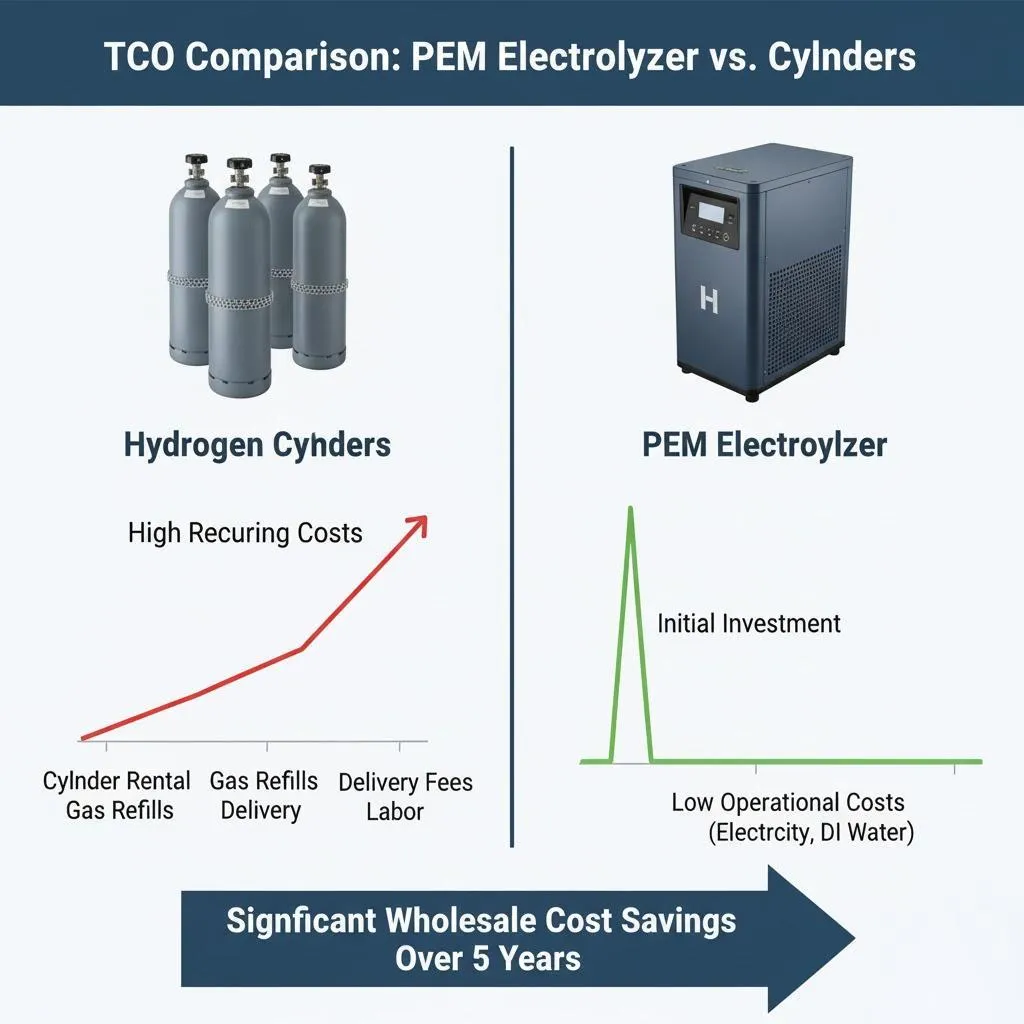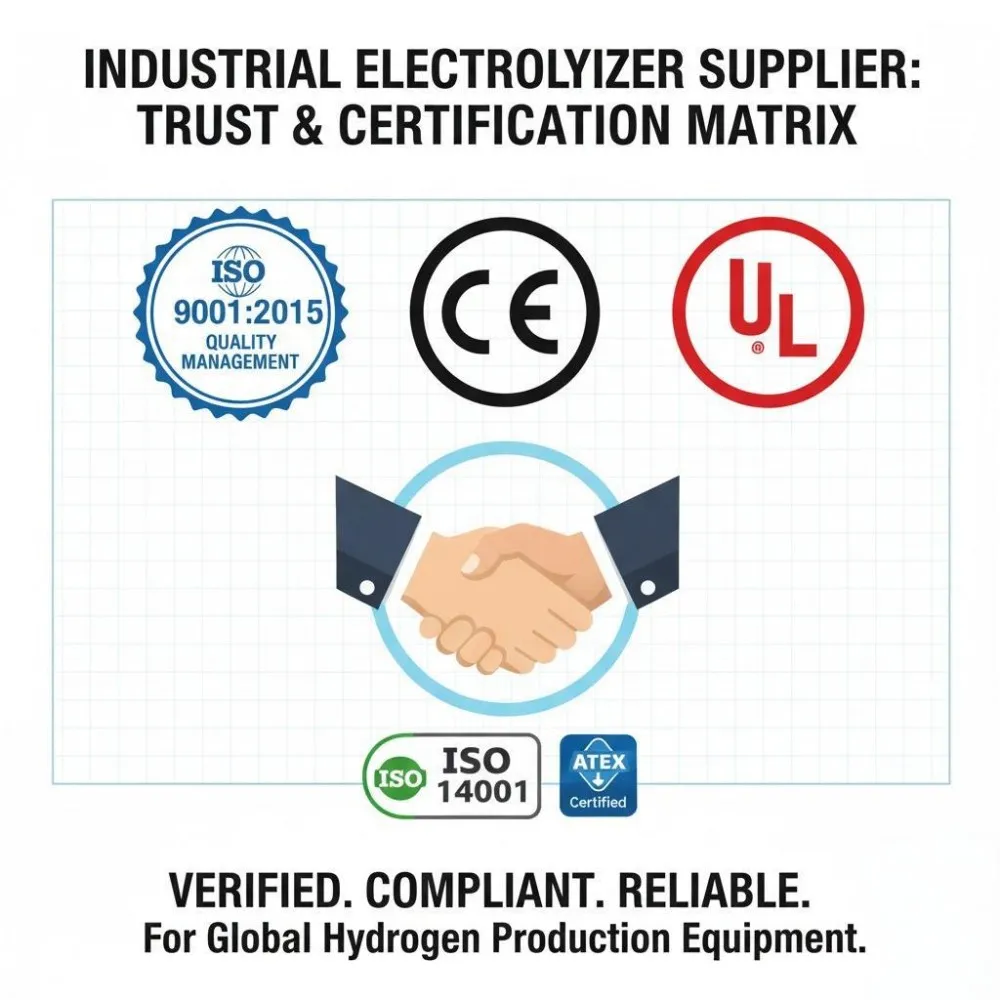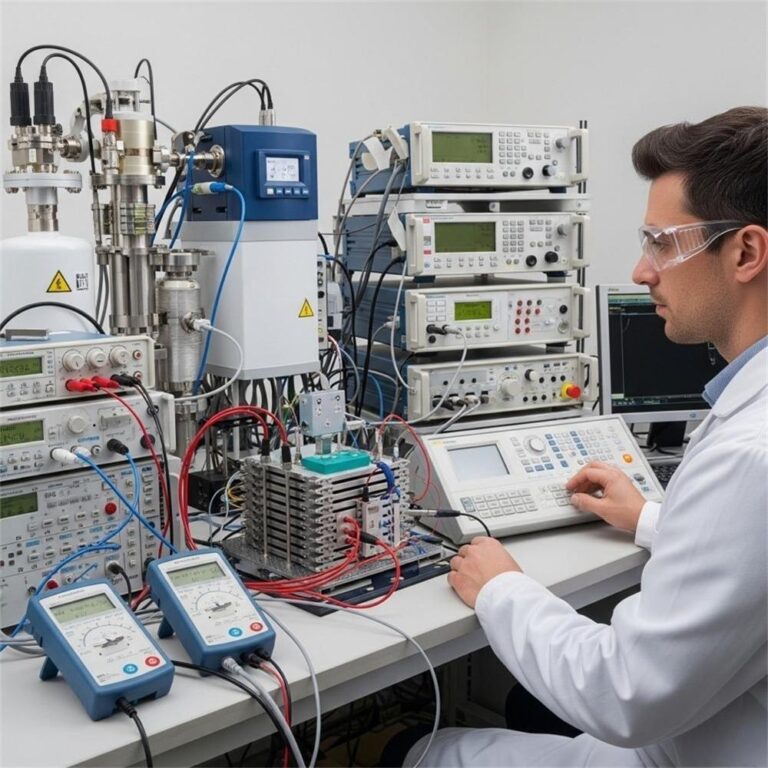How Hydrogen Generators Are Disrupting the Energy Sector – examine hydrogen generators, renewable energy, PEM technology, clean energy storage, on‑site hydrogen solutions, and industry growth forecasts.
I. Introduction
The energy sector is undergoing a revolution. With projections estimating multi‑billion USD investment in hydrogen technologies by 2030, hydrogen generators are at the forefront of the clean energy transformation. This article explores how hydrogen generators—and Proton Exchange Membrane (PEM) technology in particular—are disrupting energy systems. We highlight applications in renewable storage, fuel cell generation, and industrial use cases. For tailored solutions, Hele Titanium Hydrogen offers advanced PEM hydrogen generators built for reliability and efficiency. Contact heletitaniumhydrogen@gmail.com or WhatsApp 086‑13857402537 to explore how their solutions can work for you.
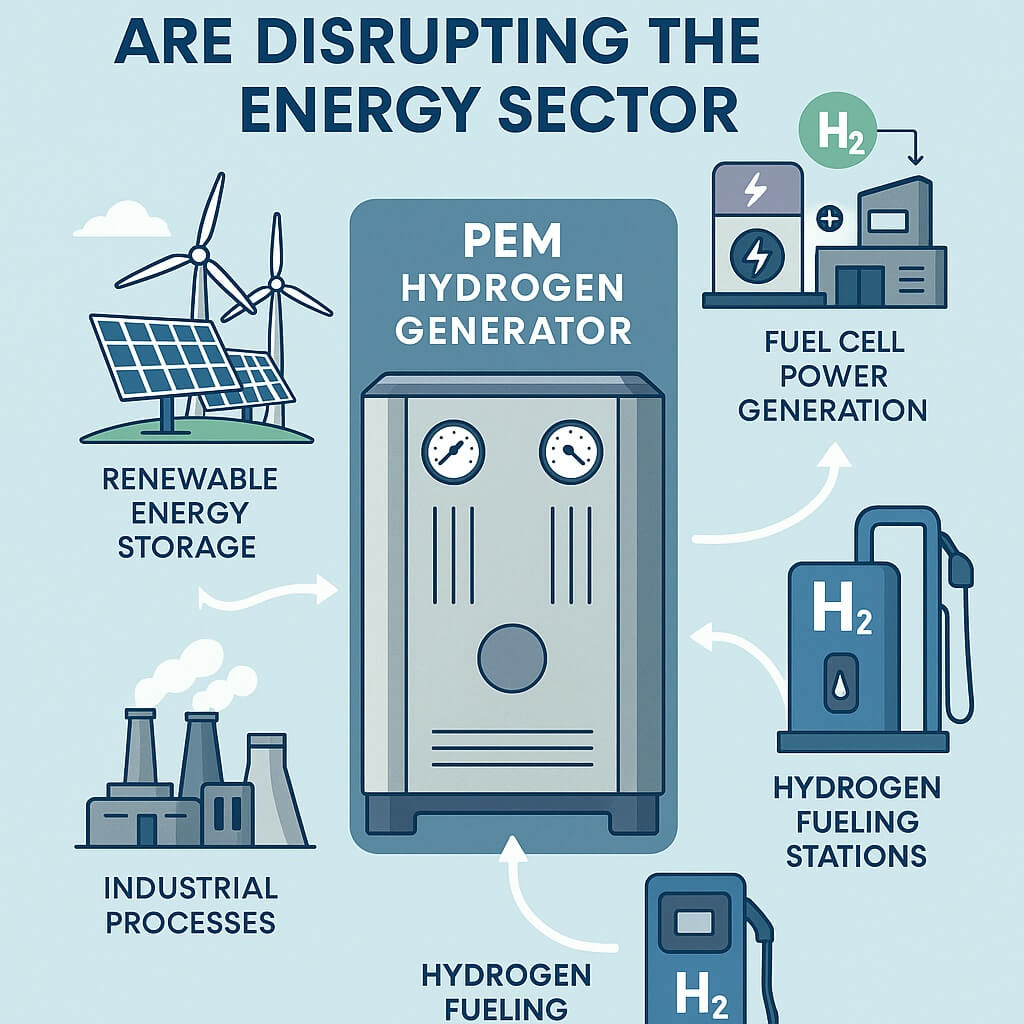
II. Understanding Hydrogen Generators and PEM Technology
What are Hydrogen Generators?
Hydrogen generators are systems that produce hydrogen gas on‐site—often through electrolysis—using electricity and water. This enables facilities to generate clean hydrogen without relying on external delivery, leading to increased safety, lower cost, and flexibility.
Why PEM Electrolysis is Transformative
PEM (Proton Exchange Membrane) electrolysis uses a polymer membrane to split water into hydrogen and oxygen. Its advantages include:
- High purity hydrogen (≥99.999%)
- Efficient startup and shutdown cycles (responsive to demand)
- Compact footprint and lower operational hazards
These benefits make PEM ideal for dynamic energy applications, modular deployment, and clean power integration.
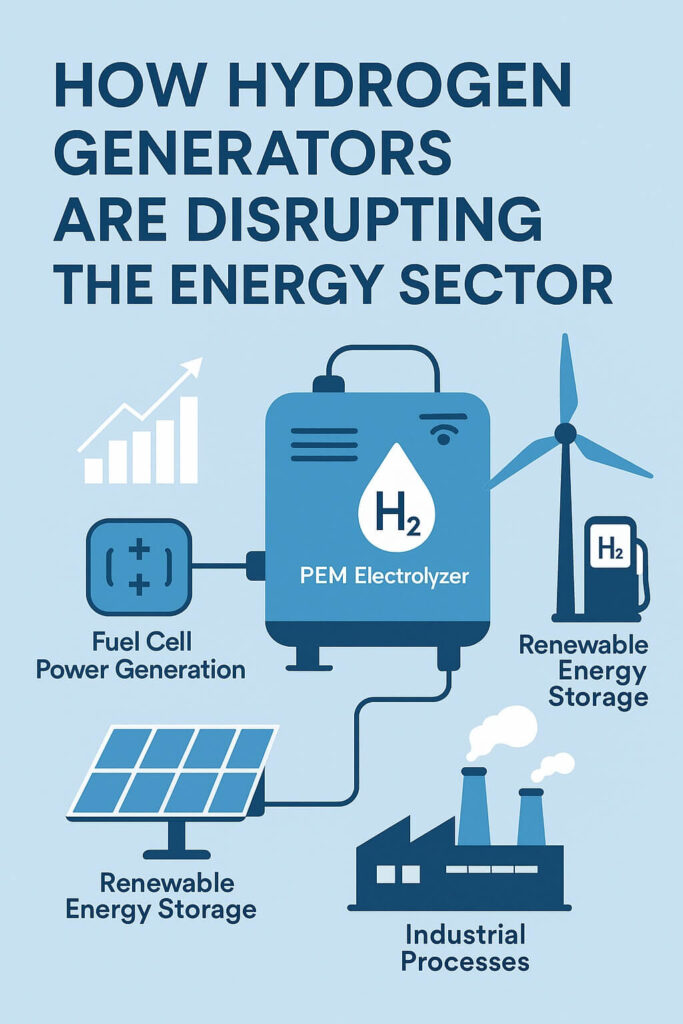
III. Key Applications of Hydrogen Generators in the Energy Sector
Renewable Energy Storage – Power‑to‑Gas
Hydrogen generators convert surplus solar or wind energy into hydrogen—a process known as “power‑to‑gas.” That hydrogen can be stored long‑term or injected into the grid, improving renewable utilization and stabilizing energy supply.
Fuel Cell Power Generation (Backup, CHP, Off‑Grid)
On‑site hydrogen enables fuel cells to produce electricity for backup systems, combined heat and power (CHP) plants, and remote/off‑grid applications. These units bring clean, reliable energy when it’s needed most.
Industrial Processes (Refining, Ammonia, Steel)
Industries such as refining, ammonia production, and steelmaking rely on hydrogen. On‑site generators reduce logistics costs and emissions and improve supply chain resilience.
Hydrogen Fueling Stations
Hydrogen generators at fueling stations support fuel cell vehicle networks by producing hydrogen on‑demand. This decentralizes supply and lowers infrastructure barriers to scaling hydrogen transport.
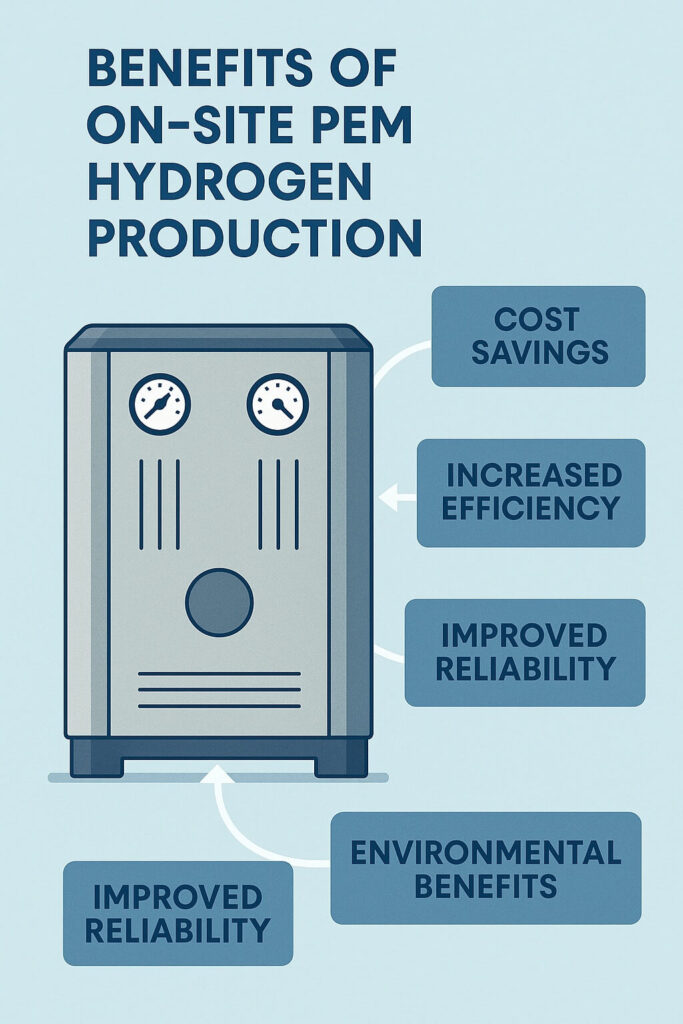
IV. Benefits of On‑Site Hydrogen Generation for Energy Companies
Cost Savings
Generating hydrogen on‑site avoids expensive compressed hydrogen delivery. It eliminates transportation, reduces storage needs, and minimizes supply chain risk—a significant cost advantage.
Increased Efficiency
Transporting hydrogen often involves energy losses. On‑site generation minimizes these losses and ensures optimized energy deployment, boosting efficiency and cutting carbon emissions.
Improved Reliability and Security
Energy providers gain independence from suppliers. With on‑demand hydrogen, they can better manage fluctuating demand and maintain uninterrupted operations.
Environmental Benefits
Using renewable energy to power hydrogen generation leads to net-zero or low-carbon hydrogen. This supports clean energy goals and helps companies meet environmental regulations.
V. Case Studies and Examples
Several pioneering energy projects illustrate hydrogen’s real-world impact. For example, large-scale renewable‑to‑hydrogen storage systems in Europe, and industrial producers using on‑site PEM generators to cut delivery reliance and carbon footprints. Hele Titanium’s deployments have delivered measurable cost reductions, emissions cuts, and increased operational control.
VI. The Future of Hydrogen Generators in the Energy Sector
Market Trends and Forecasts
By 2035, the hydrogen generator market is expected to grow rapidly thanks to favorable policies, government subsidies, and clearer climate goals. Demand is rising in utilities, industry, and transport sectors.
Technological Advancements
Innovation is driving down PEM system cost, improving efficiency, and scaling deployment. Emerging trends include modular containerized units, longer-life membranes, and smart energy integration capabilities.
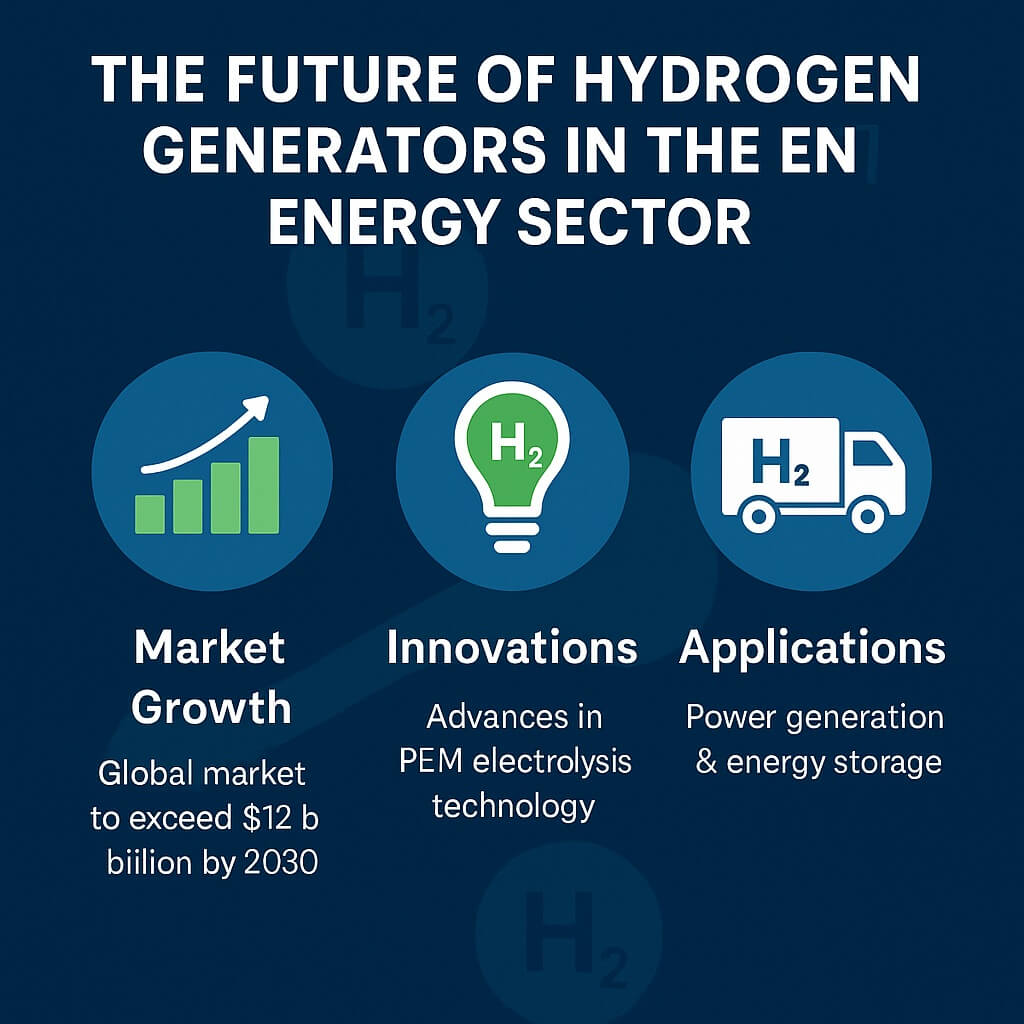
VII. Why Choose Hele Titanium for Your Hydrogen Generator Needs?
Hele Titanium stands out with high‑quality PEM hydrogen generators, customizable designs, and deep technical expertise. Key advantages include:
- Reliable product performance and long lifespan
- Tailored solutions for different industry needs
- Responsive service and customer support
- Competitive pricing structures
Learn more on their Products page, explore service offerings on their Service page, or visit their FAQ page for additional insights.
FAQs
1. What is a PEM hydrogen generator?
A PEM hydrogen generator uses a polymer electrolyte membrane to electrolyze water into high‑purity hydrogen, ideal for clean energy applications.
2. How does on‑site hydrogen generation save costs?
It avoids delivery and transport fees, reduces storage complexity, and eliminates dependency on external supply chains.
3. Can hydrogen generators work with solar and wind energy?
Yes—excess electricity from renewables can power electrolysis, turning intermittent output into storable hydrogen.
4. Are PEM generators safe and scalable?
Yes. PEM systems are compact, modular, have rapid response times, and maintain high hydrogen purity, making them scalable and safe.
5. What industries benefit most from on‑site hydrogen?
Industries like refining, ammonia production, steelmaking, and utilities benefit from supply resilience and localized hydrogen production.
6. How do I get support or request a quote?
Contact Hele Titanium at heletitaniumhydrogen@gmail.com or WhatsApp 086‑13857402537. Use their Contact Us page to get personalized recommendations.
Conclusion
Hydrogen generators—especially PEM‑based systems—are revolutionizing the energy sector by offering cleaner, more efficient, and cost‑effective power solutions. From renewable energy storage to industrial applications and fueling stations, on‑site hydrogen production is disrupting traditional supply models. For customized, robust solutions, Hele Titanium provides advanced hydrogen generators backed by expert support.
Contact Hele Titanium today to explore your energy transformation journey:
📧 heletitaniumhydrogen@gmail.com
📱 WhatsApp: 086‑13857402537
Visit their Contact Us page to get started.


